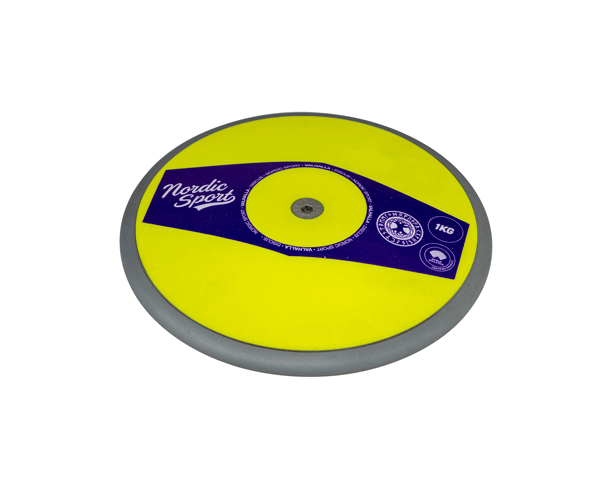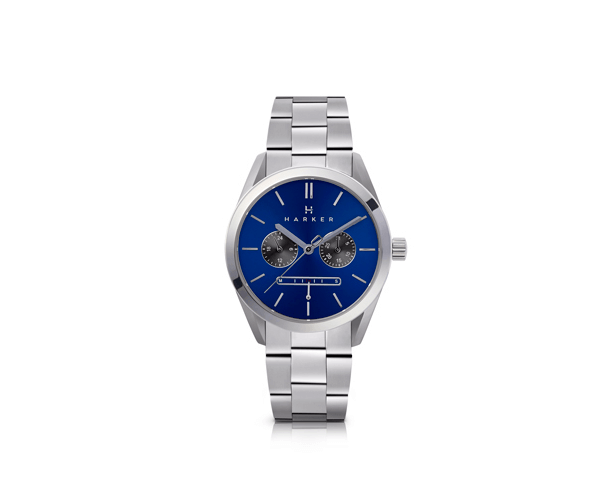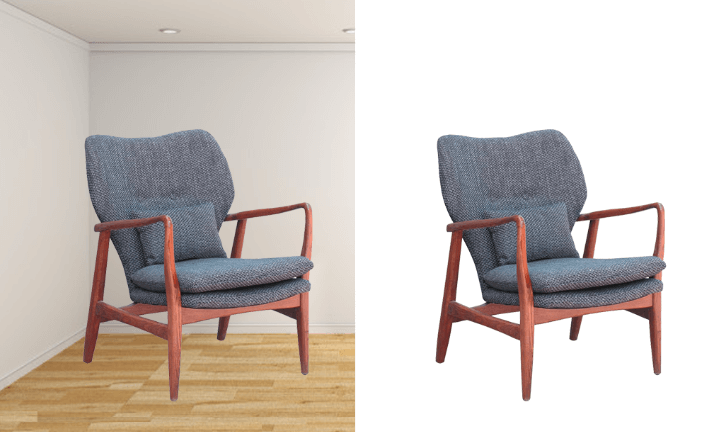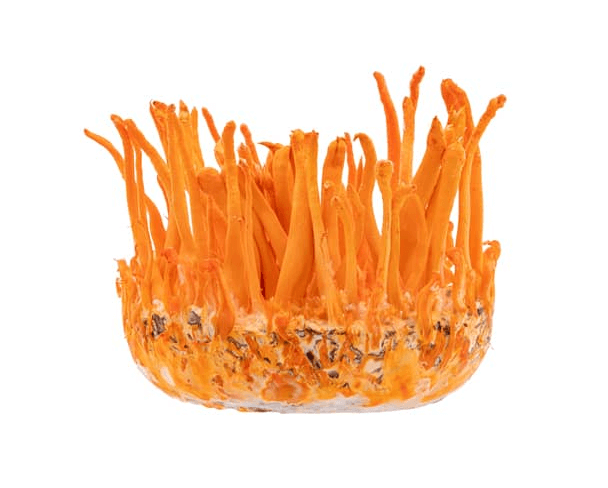Looking for the best Quality Photoshop Services to make your images stand out? Our team of qualified professionals can pop your photos. It is the perfect solution for removing background from an image or isolating specific elements within an image for further editing. It is easy to use, efficient, affordable and time saving, so why not try it?
Our clipping path services come in a range of prices from basic, simple, medium, complex, multiple and ultra-complex. Pricing is based on the complexity of the image.
Our Clipping Path Services
From a simple white background to the most complex clipping paths. Get pixel-perfect image editing services, whenever you need them.

Basic Clipping Path
A basic clipping path is a fundamental technique used in image editing to isolate an object or subject from its background. It involves creating a precise outline or path around the desired object using digital editing software such as Adobe Photoshop.
Once the clipping path is applied, the area outside the path can be removed or hidden, allowing the object to be placed on a new background or integrated into a different image seamlessly.
This technique is commonly used in graphic design, product photography, e-commerce, and various other digital media applications to achieve clean and professional-looking results.

Simple Clipping Path
A simple clipping path is a graphic design technique used to isolate an object or subject from its background in an image. This is achieved by creating a closed vector path around the edges of the object using software like Adobe Photoshop or Illustrator.
Once the path is created, the background can be removed or replaced, allowing the object to be placed on a new background or integrated seamlessly into a design. Simple clipping paths are typically used for objects with straight or slightly curved edges, such as products or basic shapes.

Medium Clipping Path
A medium clipping path lies between a simple and complex clipping path in terms of complexity and detail. It’s used for objects with moderately intricate edges that require more attention than simple shapes but aren’t as complex as objects with highly intricate details.
In a medium clipping path, the outline of the object is traced with precision, ensuring that it’s accurately separated from its background. This process involves creating anchor points and curves to follow the contours of the object’s edges.
Medium clipping paths are commonly employed for products like electronics, shoes, or furniture, where the edges may have some complexity but don’t require the same level of meticulous detailing as highly intricate objects.

Complex Clipping Path
A complex clipping path is a more intricate graphic design technique used to isolate objects with intricate or detailed edges from their backgrounds in images.
Unlike simple clipping paths, which are used for objects with straightforward edges, complex clipping paths require more precise outlining to accurately capture the intricate details of the object’s contours.
This process involves creating multiple anchor points and curves along the object’s edges to ensure that every detail is preserved. Complex clipping paths are often used for objects like jewelry, fabrics with intricate patterns, or hair strands, where precision and accuracy are crucial for a seamless result.

Multiple Clipping Path
A multiple clipping path, also known as a complex or advanced clipping path, involves the creation of multiple paths within an image to isolate different parts or elements. Unlike a simple or medium clipping path, which isolates the entire object, a multiple clipping path allows for individual adjustment or manipulation of specific areas within an object.
This technique is often used in e-commerce product photography where different parts of a product need separate editing or enhancement. For example, in a clothing image, the garment, buttons, zippers, and accessories may require separate clipping paths for independent adjustment of color, texture, or other attributes.
Creating multiple clipping paths involves meticulous outlining of each area using software like Adobe Photoshop. Each path is assigned a distinct layer, allowing for selective editing or manipulation while maintaining the integrity of the overall image. Multiple clipping paths offer greater flexibility and control in image editing, particularly for complex or detailed objects with various components.

Super Complex Clipping Path
A super complex clipping path is an advanced graphic design technique used to isolate extremely intricate objects from their backgrounds in images. This type of clipping path is necessary for objects with highly detailed and complex edges, such as intricate patterns, fine textures, or irregular shapes.
Creating a super complex clipping path requires a high level of precision and attention to detail. Graphic designers use specialized software like Adobe Photoshop to meticulously trace the contours of the object, often using a combination of anchor points, curves, and custom shapes to accurately capture every intricate detail.
Super complex clipping paths are commonly used in industries such as fashion, jewelry, or product photography, where the objects require precise isolation for editing or enhancement purposes. Due to the intricate nature of these objects, creating super complex clipping paths can be time-consuming and may require advanced skills in graphic design.
How to Cutout an Image Applying Clipping Path

1. Using Hand-Drawing Photoshop Pen tool
Our main tool for removing an image’s background is the clipping path technique. To achieve the ideal result during the clipping path process, we use Photoshop’s pen tool to cut out a 2D image.
Our skilled picture editors first outline a path around a subject’s edge. After the path drawing is finished, the subject is still included in the image, and the background is eliminated.
Generally speaking, clipping paths are used on images that show objects with smooth, hard edges, such as tables, chairs, mannequins, etc. We divide this up into various sections according to the complexity of the product in order to produce better results.
2. Apply Path Around 2 Pixels Inside from Product Edge
Image masking is the preferred method when the clipping path technique isn’t sufficient to maintain background cut-out perfection. Using a pen tablet (Wacom), image masking is a technique we use on objects with soft and rough edges to enable accurate hand drawing and image selection. The pen tool in Adobe Photoshop is used to draw and select the remaining areas that have a hard edge.
We use a variety of image masking techniques, such as layer masking, alpha channel masking, fur and hair masking, transparent masking, refine edge masking, and color masking, to remove the background from an image depending on its needs.
Why Utilize Our Clipping Path Service?
Quality clipping path work requires mastery. Any level of editing requires clipping and without it, you may struggle to achieve perfect results. Here are some reasons why photo clipping is essential for online business success:

Maximize Image Quality With Your Virtual Photo Editing Studio
Is the quality of your partner’s photo editing declining while their prices rise? If so, it’s most likely time to move to a more dependable fix. Because of the training, expertise, and experience of our staff, you can be sure that you’re getting value for your money.
Take Your Visual Presentations to the Next Level
Images with flaws can be distracting, and fixing them can take time. Allow us to handle your photo editing so that we can make subtle yet impactful adjustments that will make your photo come to life, saving you time and effort while producing excellent results.


Enhance Your Brand Recognition With Professional Photo Editing
Do you want your audience to see your brand as reliable? Use high-quality photos to promote your superior products. The secret to a successful brand is consistency. With Clipping Path Studio, you can enhance your products in an enticing way with dependable and outstanding image editing.
Different Types of Clipping Path Services Offered
Clipping path services come in various forms, depending on the complexity of the task. Basic clipping paths are suitable for simple objects with clear edges, while complex clipping paths are required for intricate subjects such as hair or fur. Multiple clipping paths allow for selective editing of different parts within a single image, while super complex clipping paths handle highly detailed or irregular shapes.
Techniques Used in Clipping Path Services
Professional editors employ a range of techniques to create clipping paths with precision and efficiency. The pen tool technique is widely favored for its accuracy and flexibility, allowing editors to manually trace the outline of objects with ease. Alternatively, the magic wand tool and channel mask technique offer quicker but less precise results, suitable for simpler tasks.
Common Mistakes to Avoid in Clipping Path Services
Inexperienced editors often make mistakes that can compromise the quality of clipping path results. These include poor selection leading to jagged edges or incomplete isolation, rough edges that appear unnatural, and over or under clipping, resulting in loss of detail or unintended alterations to the image.
Tips for Achieving High-Quality Clipping Path Results
To ensure top-notch clipping path results, it’s essential to practice diligently and pay close attention to details. Familiarizing oneself with shortcuts and advanced tools can significantly improve efficiency and accuracy in editing tasks.
FAQs
What is a clipping path service provider?
A clipping path service provider is a company or individual specializing in precise selection and isolation of objects within images for editing purposes.
How do I choose the right clipping path service provider?
Consider factors such as experience, turnaround time, pricing, and client testimonials when selecting a clipping path service provider.
What types of clipping path services are available?
Clipping path services range from basic to super complex, catering to various editing needs and levels of complexity.
How You Do It?
After receiving the order, ascertain the needs of the client. Next, using the Pen tool, our skilled clipping path experts create a path around the edge of the subject or object in a particular image. After that, we make final touch-ups to ensure a faultless outcome. We don’t automate our service; everything is done entirely by hand. This is a result of our emphasis on maintaining quality, as automation in the clipping path drastically degrades images. Images with complicated objects in particular lose important details, producing output that is of poor quality.

